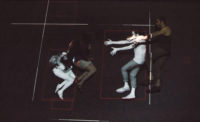Herzog & Meuron and Ai Weiwei's Serpentine Pavilion

Serpentine Gallery Pavilion
Herzog & de Meuron and Ai Weiwei
London
Image courtesy Herzog & de Meuron and Ai Weiwei

Serpentine Gallery Pavilion
Herzog & de Meuron and Ai Weiwei
London
Image courtesy Herzog & de Meuron and Ai Weiwei

Serpentine Gallery Pavilion
Herzog & de Meuron and Ai Weiwei
London
Image courtesy Herzog & de Meuron and Ai Weiwei

Serpentine Gallery Pavilion
Herzog & de Meuron and Ai Weiwei
London
Image courtesy Herzog & de Meuron and Ai Weiwei

Serpentine Gallery Pavilion
Herzog & de Meuron and Ai Weiwei
London
Image courtesy Herzog & de Meuron and Ai Weiwei

Serpentine Gallery Pavilion
Herzog & de Meuron and Ai Weiwei
London
Image courtesy Herzog & de Meuron and Ai Weiwei

Serpentine Gallery Pavilion
Herzog & de Meuron and Ai Weiwei
London
Image courtesy Herzog & de Meuron and Ai Weiwei

Serpentine Gallery Pavilion
Herzog & de Meuron and Ai Weiwei
London
Image courtesy Herzog & de Meuron and Ai Weiwei

Serpentine Gallery Pavilion
Herzog & de Meuron and Ai Weiwei
London
Image courtesy Herzog & de Meuron and Ai Weiwei

Serpentine Gallery Pavilion
Herzog & de Meuron and Ai Weiwei
London
Image courtesy Herzog & de Meuron and Ai Weiwei

Serpentine Gallery Pavilion
Herzog & de Meuron and Ai Weiwei
London
Image courtesy Herzog & de Meuron and Ai Weiwei
























